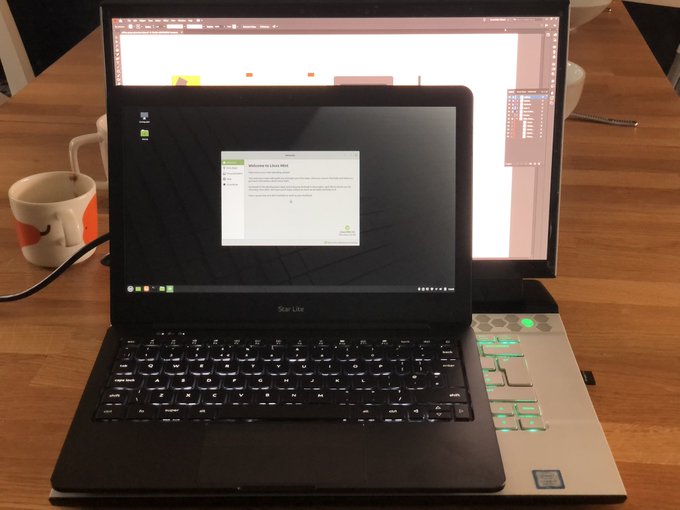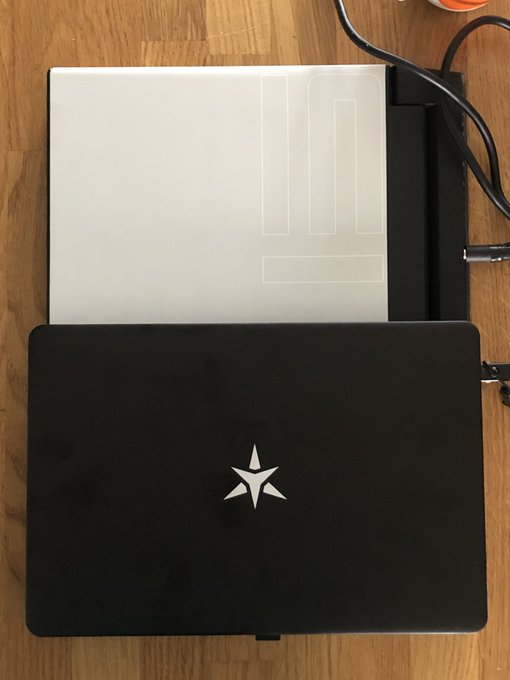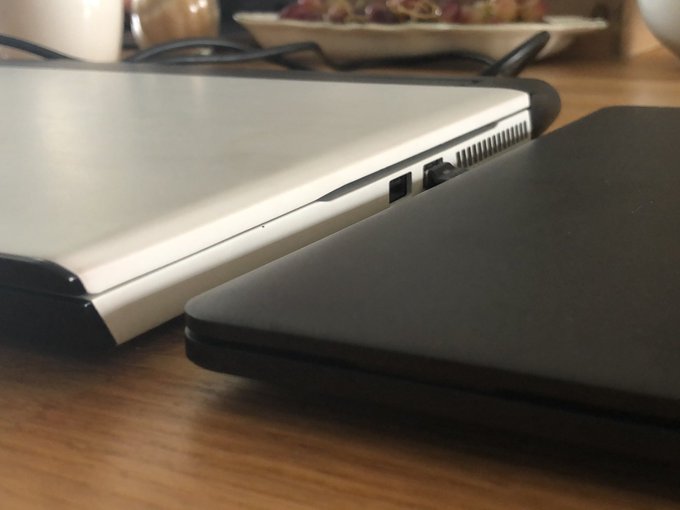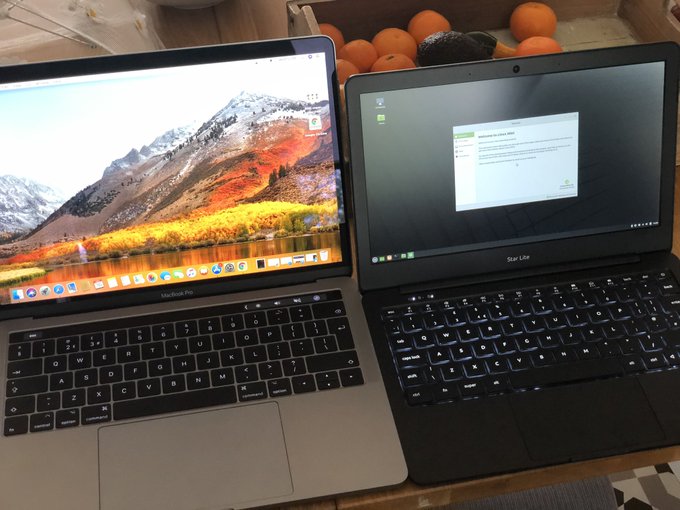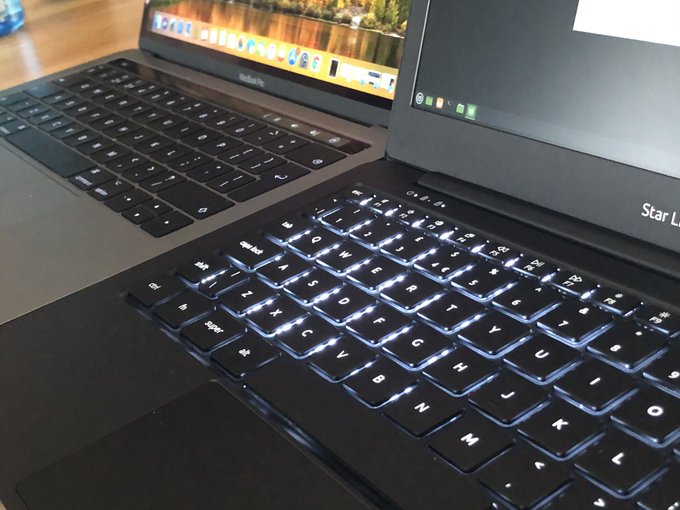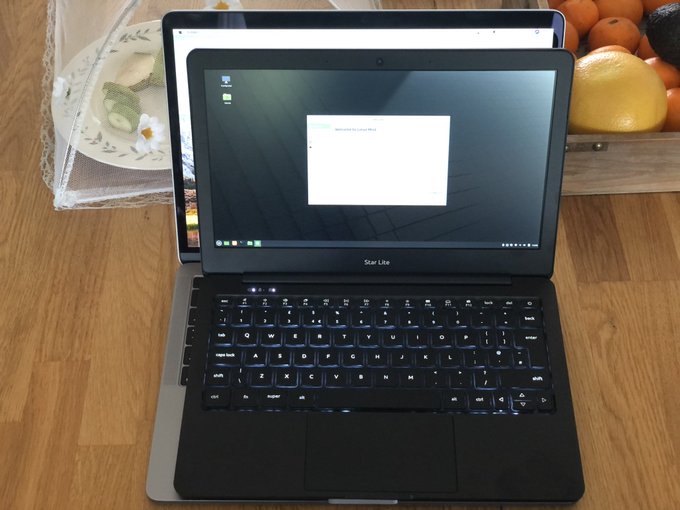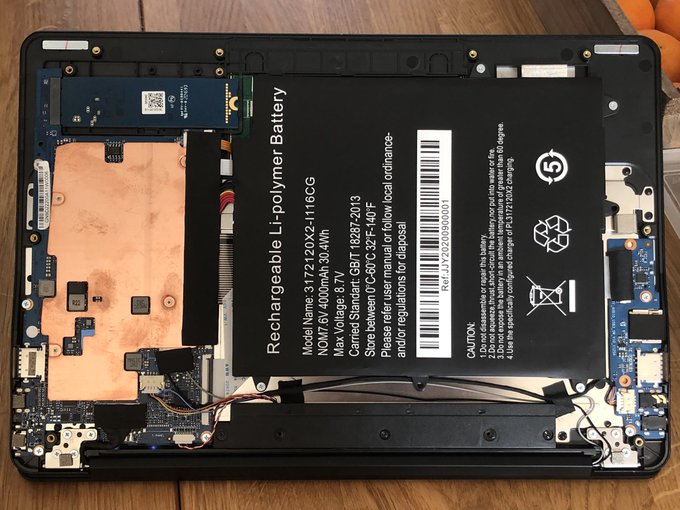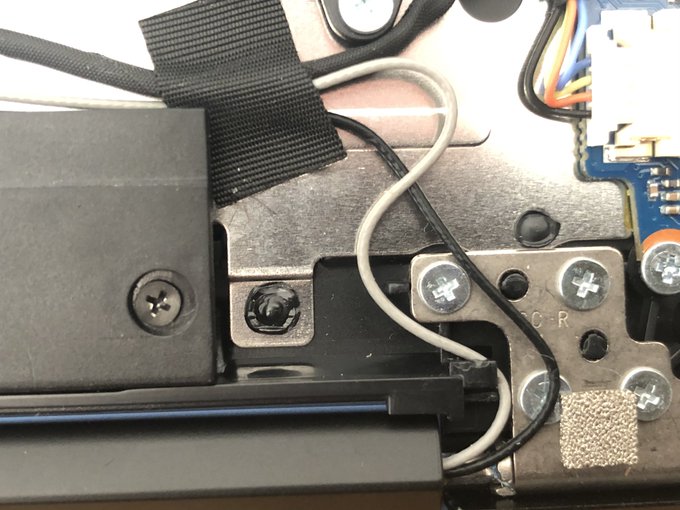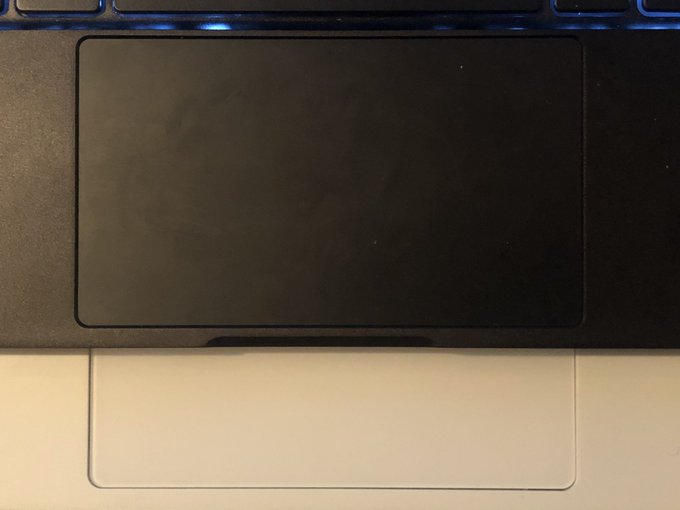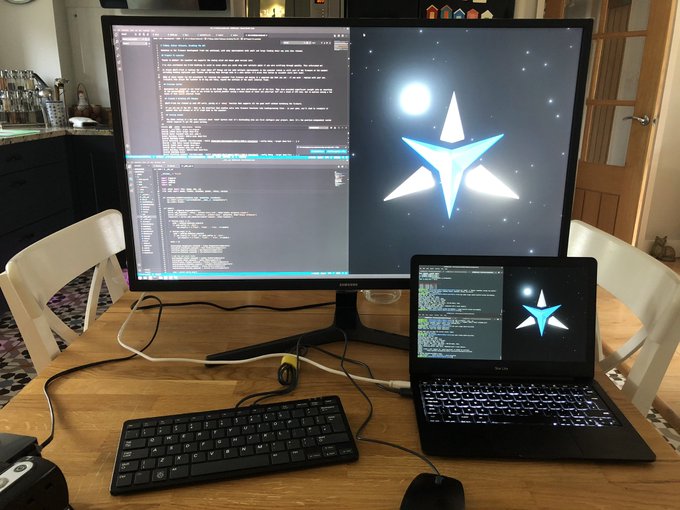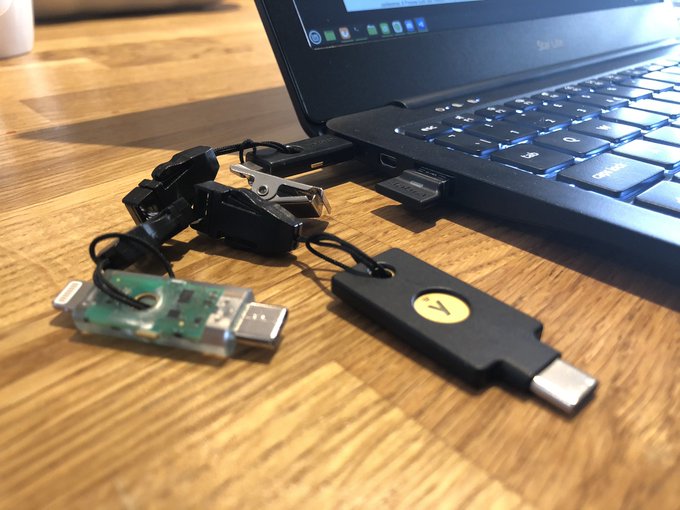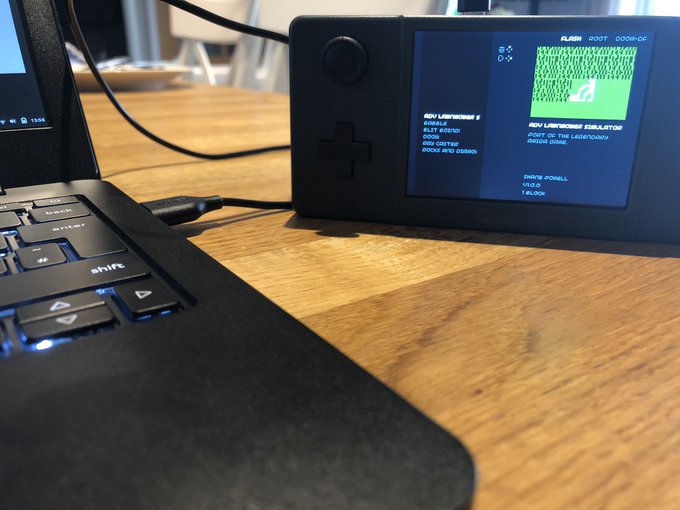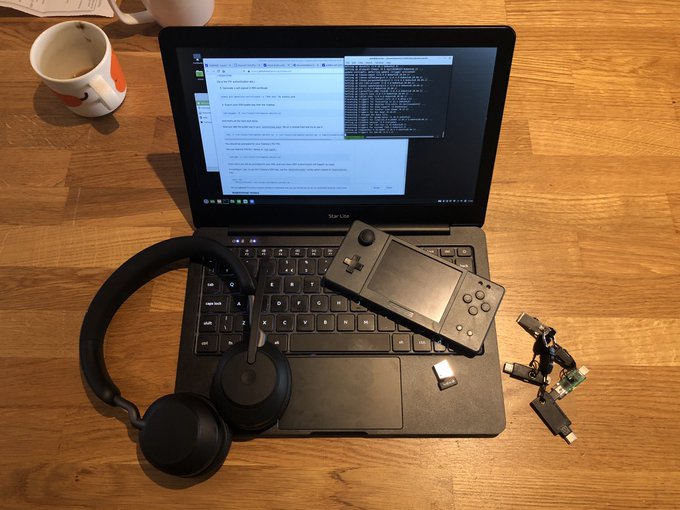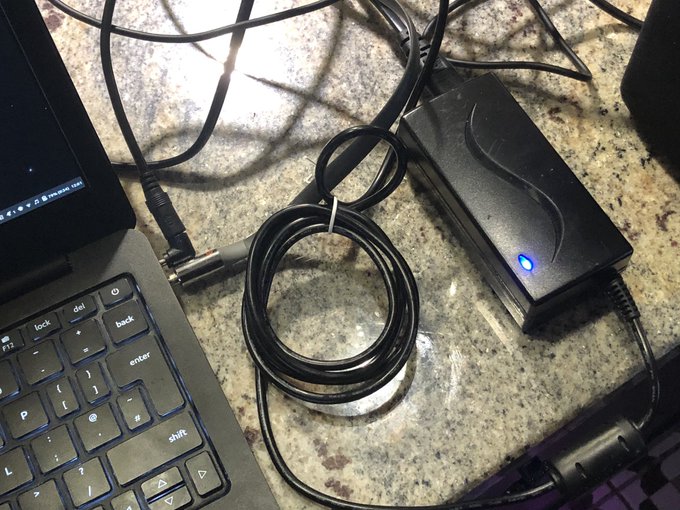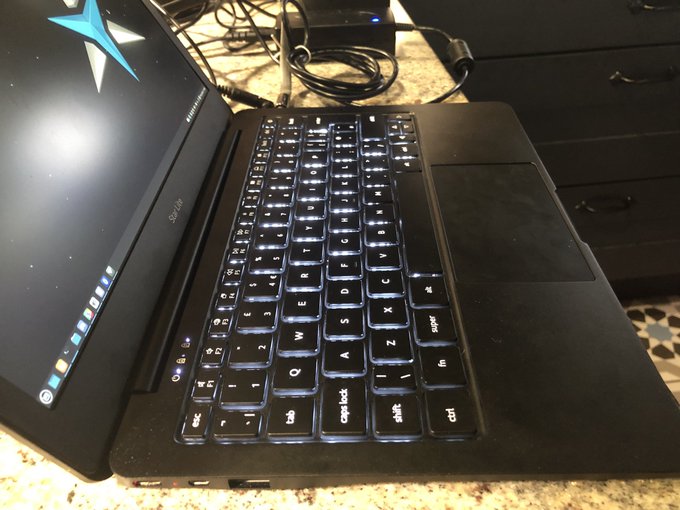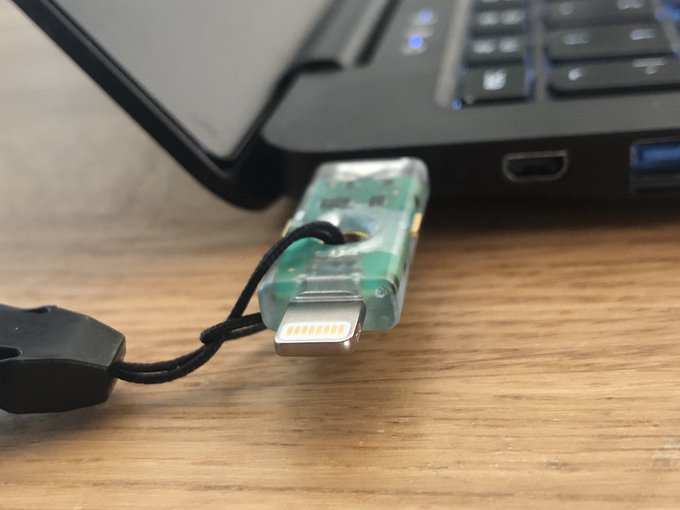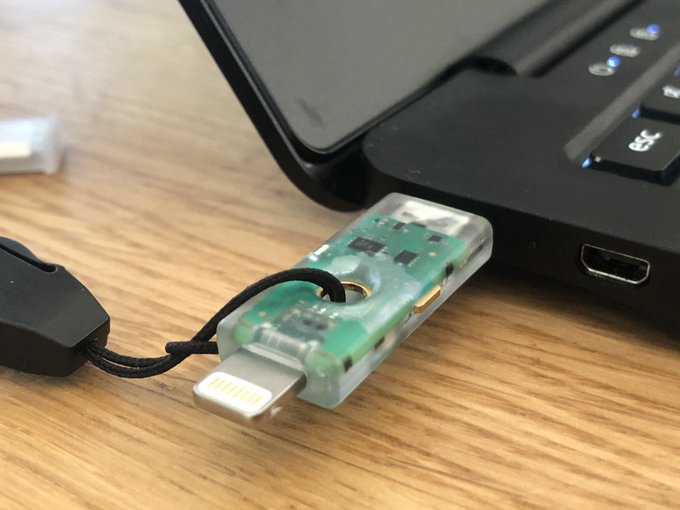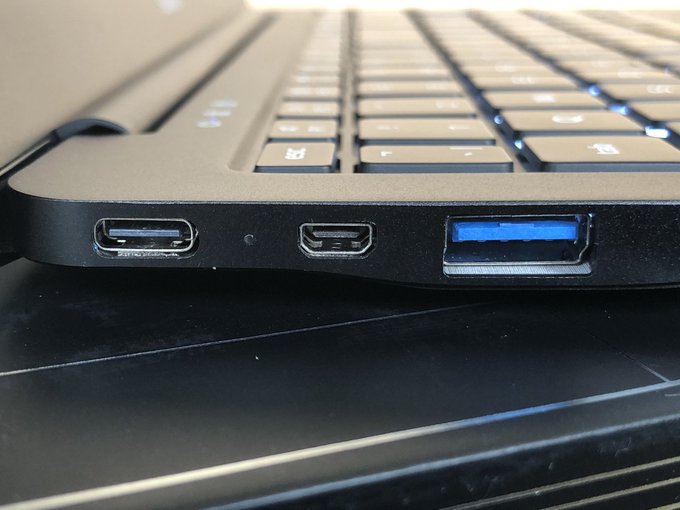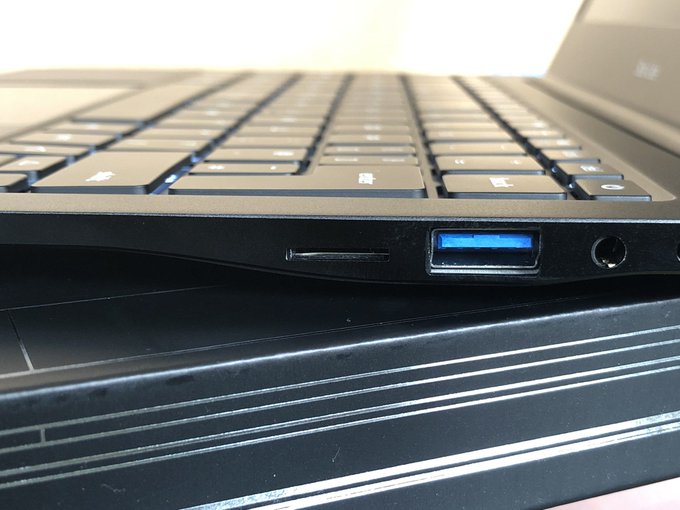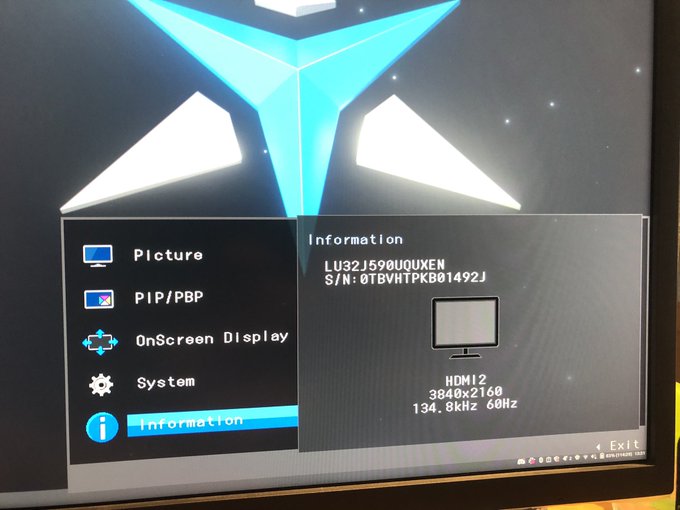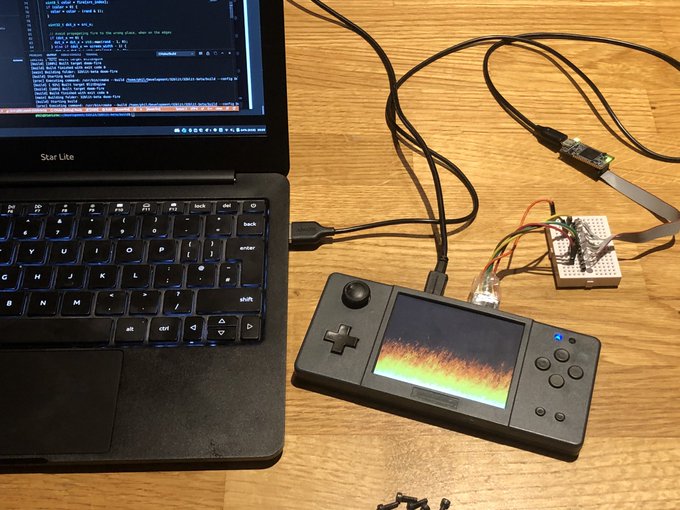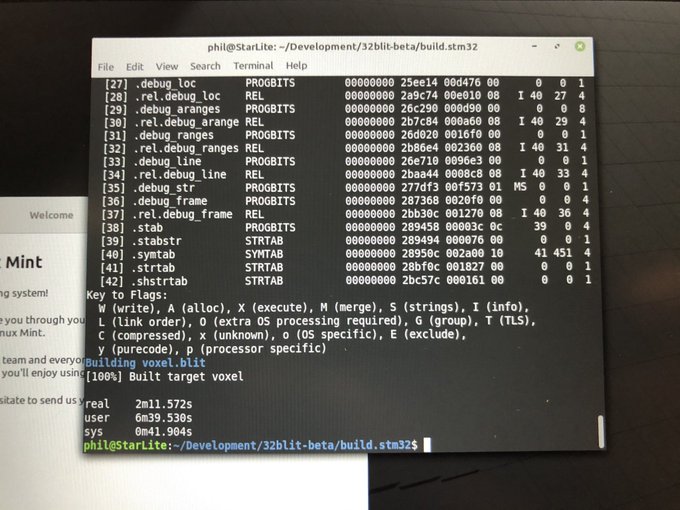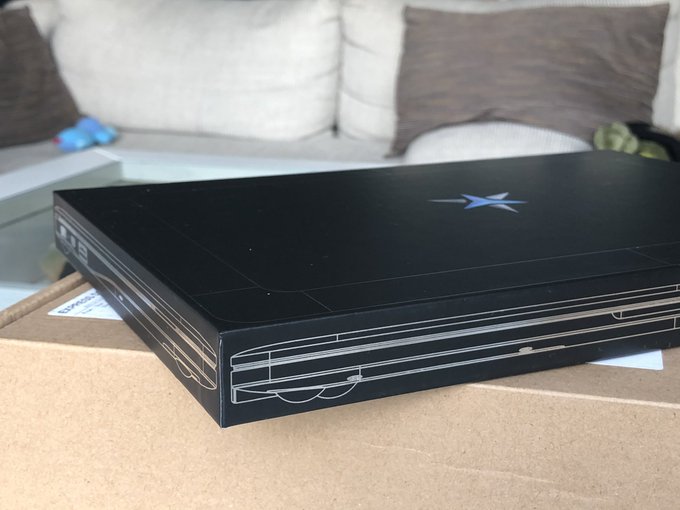Star Labs Lite MKIII Reviewed
Before I start gushing about the Star Labs Star Lite MKIII I’m going to set the tone. I like this laptop. I like this laptop a lot. It’s going to be very difficult for me to write about without sounding like I’m spewing out the greenest of corporate sponsored astro-turf. I am, however, completely sincere in my praise of this machine.
Update, October 2021: Star Labs released a new 2.1.0 AMI and 1.03 ITE firmware on the 22nd September. Both of these list fixed related to charging. “Improved Charger configuration” in the AMI update, and “Modified charging frequency to reduce noise” in the latter. I had something of a misadventure installing this update. While the ITE firmware installed fine, the AMI wouldn’t budge (yes, even after disabling BIOS Lock in the BIOS). Using the GUI or CLI “fwupdmgr” tools failed repeatedly to start any updates on reboot. Eventually I resorted to grabbing the relevant firmware from Star Labs Firmware GitHub Repository (You should *not* do this). After copying the files into /boot/efi and rebooting into the UEFI shell the update auto-started and flashed the update. It took a small while. By this time it was roughly 1AM and when the update finished, and the system started up to a black screen I panicked. However sleeping on it, and trying again in the morning resulted in a booting, updated system. I just needed patience. It remains to be seen whether this update fixes the issues I detailed below, turning the Star Lite from great to near perfect, but I will report back if/when I notice any difference. Meanwhile the Star Lite has been updated to a tasty Mk IV with a small bump to the n5030, a keyboard that looks – at first glance – redesigned, a new touchpad and – finally – coreboot support. I don’t know if I’ll get my hands on one, but if the Mk III is anything to go by, and if Star Labs have been taking notes, it should be excellent.
Update, April 2021: After some months of usage both I and at least one other user are running into charging issues over USB Type-C, with the Star Lite charger seemingly deciding not to work until left unplugged to “cold boot” and the Star Lite itself having issues charging from any USB Type-C source. This is an enormously difficult problem to track down and replicate though so I’m giving Star Labs the benefit of the doubt here and trying to work with them to replicate and fix the quirks. It’s important to say that USB Type-C charging is… quirky… and if you’re going to daily drive the Star Lite MKIII and rely upon it for work you should *absolutely* purchase a standard 12v, 2A, barrel-jack A/C adapter. Not Star Labs’ USB Type-C to barrel jack adapter, but a dumb, simple, basic, unimaginative, ordinary barrel jack power supply with no smarts and no room for failure. I’ve had 100% success charging using both an old Maplin universal power supply and a generic mini PC supply and nothing but surprise problems with USB Type-C. All this being said… USB Type-C and Power Delivery are a minefield and the presence of these quirks really doesn’t surprise me. I know it’s absurd to say “spend another £10-£15 on a dumb, basic A/C adapter if you plan on buying this machine” but the charging issues we’ve encountered don’t change the fact that the Star Lite is an excellent mini computer.
TLDR: The Star Lite Mk III is EOL. Click here to learn about the MK III.
I first became aware of Star Labs when hunting for a laptop to replace my aging, but well-loved VAIO P11z. I specifically wanted an 11″ laptop, remembering my time with the 11″ MacBook Air fondly, and something that erred more on the ultrabook than the chromebook end of the spectrum. I also wanted it to be somewhere in the sub £400 bracket.
Searching for “11” laptop” reveals a pretty lackluster landscape of low-powered lemons. Sure, you might be willing to put in the legwork to coax the Google flu out of a Chromebook and convince it to run Linux applications, more power to you. But for me- notwithstanding not wanting to place any more of my life into the hands of Google – the 2-4GB RAM ceiling and excruciatingly awful eMMC storage endemic of low-cost Chromebooks is a real turn off.
Comparing the @starlabsltd Star Lite MKIII with the @Alienware M15 R2. pic.twitter.com/zKxgDtWd5p
— Phil Howard (@Gadgetoid) December 16, 2020
Windows laptops in this size/price bracket don’t fare much better. When I was first comparing alternatives to Star Labs’ diminutive Linux laptop I found something from Dell which came close with the specifications, but which I could only describe as appearing to be made from melted plastic.
Approaching the problem- if you could call lack of a computer in a form factor I want a “problem”- from another angle coaxes me toward GPDs offerings. GPD’s various Windows ultra-compact laptops look compelling enough and deliver ultra-book like performance, but their extremely compact design makes them insufferably awful as production machines. This is why I clung to the P11z for so long- it fits a large keyboard and a wide screen into a small package that’s right on the cusp of usability for me.
I’m pretty confident, therefore, in claiming that the Star Lite is singularly unique in the market. It’s an 11″ laptop with build quality, features and specifications you won’t find elsewhere even in Windows laptops. Once you qualify the Lite in its Linux-user niche, it’s simply unrivalled.
So, what makes the Lite so good?
No Gimmicks
First, let’s summarise what the Star Lite is *not*. It’s not an ultrabook despite looking and feeling like one, it’s not a tablet or a touch computer, and it’s not a performance or gaming machine.
The Lite keeps things simple and does them well. As a consequence it looks and feels a lot more premium than it has any business doing at £399.
It’s free of gimmicks like touch input which in my experience only ever serves as a crutch for garbage tier trackpads. As such it doesn’t do any fancy folding-into-a-tablet so the design is durable and uncomplicated. It very much feels like it was put together by the Apple of the Linux world. If they were to entertain a not-astronomical price tag, anyway.
Build Quality
You probably don’t expect much from a £399 laptop, right? Flimsy, plastic, creaky and irrefutably cheap. The Star Lite couldn’t feel any further from this.
It’s impossible for an ex Apple user to hold an aluminium laptop and fail to draw parallels with Apple’s products. The black, anodized aluminium chassis of the Star Lite falls somewhere between Apple and Razer in terms of quality, fit and finish and it really does remind me of the 11″ Air. That I’m even comparing a £399 laptop to £1000+ ones should be a pretty good sign. That it compares favourably is – frankly – astonishing.
Yes… that’s a backlit keyboard and a crisp aluminium case… oh and also there’s a MacBook there too.
Comparing a @starlabsltd Star Lite MKIII to a 2016 MacBook Pro. pic.twitter.com/LroFERd0p0
— Phil Howard (@Gadgetoid) December 16, 2020
The insides that it conceals aren’t quite as together as Apple’s expensive art pieces, reminding me more of the hodge podge inside a Razer Blade, but since you don’t ever have to look at them it’s scarcely a concern.
A laptop with a battery or a battery with a laptop? pic.twitter.com/fUs6sb6riD
— Phil Howard (@Gadgetoid) December 17, 2020
Like most aluminium laptops since Apple made unibody sexy, the top part of the Lite is a single piece of aluminium (stamped, I presume) with a plate that is screwed snugly into the bottom to protect its juicy innards. Unlike Apple’s laptops, the Lite uses regular crosshead screws. Two of these screws give access to an SSD drive bay, the only upgradable component, and the other ten hold the bottom together. There are more screws holding this tiny thing together than my stonkin’ great big Alienware m15.
My unit arrived with a slight gap along the right-hand edge through which I could see the keyboard backlight. Following Star Labs’ instructions I loosened the screws and snapped the bottom firmly back into place. The tolerances are extremely tight and I don’t begrudge a production line for missing a minor and easily rectified issue. Once popped back into place the top and bottom mate uniformly with a gap you couldn’t squeeze the gossamer wing of a thimble-sized fairy into. Even if you got them drunk and bet them £50 they couldn’t do it.
The chassis has no flex or give and is easily picked up from a corner. The ten screws probably have something to do with this. It feels every bit like a £1000 machine and I’m genuinely in awe of what Star Labs have pulled off here, with just the third iteration of the Lite. Some might be disappointed to learn that it keeps the sharp edges of the laptops it’s inspired by. Unlike the larger LabTop, which softens the top outer edge slightly, I’m assuming the Lite is simply too thin to accommodate the material for this. The edges don’t bother me, though, having contended with the thin end of a MacBook Air anything is soft by comparison.
The display hinges feel like they were designed for a bigger, heavier machine and I wouldn’t be surprised to find them in the larger LabTop. This, as you might expect, has the side-effect of keeping the display firmly in place with no wiggle or slip whatsoever unless I vigorously shake the laptop. However it makes the laptop impossible to open one-handed which is an, extremely pedantic, shame. Beyond a certain angle – somewhere about 5-10 degrees – when the Lite is nearly closed, the display will drop fully closed with a satisfying, and perhaps slightly alarming, snap. This is not the kind of screen that bounces around when you type or drops closed when you pick up the laptop. It stays put.
I don’t think the keyboard is removable but that hinge looks solid! pic.twitter.com/tADgapbZQf
— Phil Howard (@Gadgetoid) December 17, 2020
I’d have loved a 180 degree hinge. The Lite falls short of opening flat by about 45 degrees which is fine, but I am a fan of shifting position when couch-computing. Being able to open the laptop flat for an ergonomically-unsound knees-up computing session would be ace. My back doesn’t agree, of course.
Detracting slightly from the otherwise uninterrupted matte black surface of the Lite is the black-mirror finish trackpad. Perhaps you are meant to stare into the dark abyss and reflect upon the very nature of existence. But really, it’s just begging you to notice how big it is.
The Trackpad
The trackpad gets an early mention because it’s good. The reason for this should be obvious at just a glance, but when I actually line things up and do the comparison I can’t help but think two things:
1. Wat?
2. wtf u doin, alienware?
The trackpad on this tiny, 11″ Star Lite is – within the limits of my ability to measure things by eyeballing them – basically the same size as the one on my gargantuan oversized 15″ Alienware m15.
The trackpad on the tiny 11” @starlabsltd Lite is the same size as the one on my monster oversized 15” Alienware ? pic.twitter.com/FHapbR2r2U
— Phil Howard (@Gadgetoid) December 23, 2020
Doing some number crunching on photos reveals some more concrete figures. On the Lite the trackpad comprises about 11% of the entire top surface, while on the m15 it’s closer to 8%.
If you remember netbooks and the excruciating, untold horrors they passed off as trackpads you’ll appreciate why this is a super big deal. And I’m pretty sure the Samsung NC10 also cost around £400 circa 2009 and came with a trackpad you could cover with a postage stamp.
The care taken to ensure it has a large, comfortable trackpad is reflective of the care taken with every design consideration in the Lite and you can rest assured that it performs respectably in Linux.
Regular mousing is precise, while the 1080p, 11″ screen makes for some tricky small targets to hit I’ve never found myself as frustrated as I’ve been with the poor trackpads of some Windows laptops (the old Samsung Book 9 Lite comes to mind as a particularly egregious example, as does my old Razer Blade). With no touchscreen to lean upon, it’s pretty crucial they got this right.
Two-finger scrolling, tap to click and other such niceties also work more or less as you would expect albeit pinch-to-zoom seems absent. Two-finger scrolling can be hit or miss, with the touchpad failing to register two discrete touches when your fingers are too close together and, subsequently, failing to recognise your attempts to scroll. Like all laptops, the Lite requires a little user adjustment to its idiosyncrasies and things like this are extremely forgivable on the intersection between a £399 price point and the hot mess that is Linux input.
The Keyboard
I’m going to be slightly less kind about the keyboard so brace yourselves. The keys are a bit hard to press sometimes. There. I said it. I’m sorry if you’re reeling from this scathing critique, Star Labs and I’ll understand if you never want to speak to me again.
Like the trackpad, the keyboard on this tiny 11″ laptop is roughly the same size as the one on my huge 15″ laptop. It’s a little narrower, with some modifier keys being truncated and looking awfully squashed at the ends, but the key sizes and spacing are basically identical to the keyboard I’ve been used to typing away on for the last year or so. Keys are also back-lit, with three levels of brightness to pick from (I’d have loved more fine-grained control here, RGB option pls? haha)… one of those being “off”, of course. Back-lit keys on a laptop this small and this inexpensive was one of the huge draws to the Star Lite for me. Despite typing being my stock in trade I’ve never quite mastered the art of doing it properly, and I’m a look-down-and-reorientate-myself-periodically typer who still needs the crutch of visible key labels.
The squashed modifier keys are a necessary evil for fitting a decent-sized keyboard onto a tiny laptop, and surprisingly few keys are affected. Things like Shift and Tab have never really needed to be 150-200% wide and I don’t miss them. Backspace- abbreviated to just “Back” on the Lite’s keyboard- feels a little more contrived but again it’s easy to adjust to. Some more common programming keys – `, |, [, ] and # – have got a half-width treatment but I haven’t noticed them being more tricky to hit. Overall this keyboard has required virtually no adjustment save for my opening critique- the difficulty of pressing keys.
At first I thought my missed key presses were a side-effect of a firmer keyboard and, indeed, the Star Lite’s keyboard feels a little firmer than those I’m used to. But a little directed investigation reveals a far more nefarious culprit that will be difficult to train out of my fingers- pressing some keys at the extreme edges won’t actuate them.
Indeed I’ve confirmed this across multiple keys, gently pressing around the edges of the key and trying to remain confident that it’s an intermittent issue I’m not imagining. I can’t say with any certainty that it affects all Lite keyboards, or even affects them in the same way but I narrowed my steps-to-recreate on my unit down to the following:
1. Align your fingers with “h” and “j”
2. Start pressing “h” and “j” alternately, so you’re typing hjhjhj
3. Now move your fingers slowly to the right, continuing to type
4. Observe hjhjhjhj become hjhjhjhjjjjjjjj
5. Hmm.
I can’t repeat this trick with “k” and “l”, which suggests there’s a level of tolerance at play here and that not all keys are created equal.
In practise this is a minor but persistent annoyance. I’m not a great typer, so I’m used to continually self-correcting and usually pick up missed keys as I would a typo. As such, a continuous typing session – I’m writing this article *on* the Lite – will see my error rate slowly fade as I get used to contending with missed keys. The odd burst of typing can be a little tricky, though, and often I might miss out a letter and fail to notice.
The responsiveness – or lack thereof – of some keyboard keys at their extremes is the only thing I’ve found so far that betrays where Star Labs might have had to pinch pennies to sell an otherwise excellent machine for £399.
The Screen
Ho boy. If the keyboard feels like Star Labs had to crunch the BOM a little, the screen is the exact polar opposite. The 1080p, IPS display in the Lite is some dark wizard magic. The viewing angle is All Of The Angles, colour is reproduced accurately with consistent gamma across channels, there is no visible gradient banding and 1080p at 11″ is a really, really nice resolution for writing text when it’s zoomed enough to be comfortably readable and take advantage of lots of pixels worth of anti-aliasing. This article, for example, I’m writing on the Lite in xed after zooming in text 10x.
While artificial testing of the viewing angle notes some visible shift at extreme angles, this isn’t significant enough to have any practical or really even noticeable impact on normal use. The display is clearly IPS and I suspect Star Labs went to some considerable trouble to source it. Having encountered some truly awful displays in low-cost (cough netbook cough) laptops before, I’m impressed.
No problem driving a 4K display from the @starlabsltd Star Lite MKIII – though the nice IPS in the laptop shows up my 4K monitor for the cheap garbage it is ? the official @Raspberry_Pi keyboard and mouse (in grey/black) complete a great … little?… setup. pic.twitter.com/xD8XElSlWI
— Phil Howard (@Gadgetoid) December 18, 2020
Yes the bezel around the screen is big, but you don’t really gain anything by trimming a laptop close to the screen edge. In Star Labs’ case this particular screen might be *the one* and the laptop itself would have to shrink to produce a more modern, sleek fit. This would no-doubt result in compromise elsewhere. The bezel is flat, smooth, inoffensive and – most importantly – non reflective so it never makes itself obvious and does not detract from the premium feel.
While I might have rolled OLED in my workstation laptops, the practical reality of a lockdown working environment meant I spent a lot more time with a cheap and cheerful 4K non-IPS LCD. The display in the Lite clearly blows this out of the water. The display where I’d have expected a £399 laptop to show weakness, but Star Labs really brought their A-game here. For those of you vexed by reflective, glossy screens you’ll also be pleased to know that the Lite’s ISP is matte and shrugs off glare- not that there’s much sun right now.
Sound
The Lite has a 3.5mm audio jack, but what you get out of that depends on what you connect to it. The integrated speakers are a different story, though. They’re… ok. They very cannily fire out of the back of the laptop, hidden in the hinge where you would normally expect air vents to be. Indeed I mistook them for air vents at first glance. Sound volume is generally pretty good, and loud enough for video watching (even for me, and that’s saying something). Bass is a little absent, which shouldn’t be surprising in a package this small, and audio quality suffers as a consequence.
I didn’t expect particularly great audio so the loudness – yep a lot of laptops can’t even muster being hearable – is welcomed, but I won’t be using the Lite for music listening anytime soon. Audio is definitely another area that betrays the relatively low-end innards hiding within the high-end exterior of the Lite. Anyone could truly mistake this for a £1000 ultrabook until it opens its darn mouth.
Ports, ports, ports!
It’s a tiny, compact laptop so when it comes to connectivity you’ve got to expect some compromises. The Lite isn’t “lite” on IO though, managing to squeeze micro HDMI, a USB Type-C port, two full-sized USB A ports, a microSD slot, a 3.5mm audio jack and – for bonus points – a 3.5mm barrel jack port… don’t plug your headphones in here since it’ll only play Snap “I’ve got the power” on loop at maximum gain.
Room enough in this @starlabsltd Star Lite MKIII for @Yubico and a @JabraBusiness dongle on the left. A cable to my @32blit on the right. A tidy, colour-coordinated little setup for on the go development! pic.twitter.com/gizwV85F2x
— Phil Howard (@Gadgetoid) December 16, 2020
The 3.5mm barrel jack is an extremely welcome addition, and is intended to be used with a dubious USB Type-C to 3.5mm barrel connector cable that plugs into your existing Star Labs 60W USB Type-C power adapter. While a USB Type-C to barrel jack cable is of questionable conformance to the specification (I’m going to have to admit my ignorance here, I’m not reading the whole bloody document) the ability to swap out the cable and free up that precious USB Type-C port for IO is handy.
The supply is also relatively standard- 3.5mm, 12v, 2A for a total of 24W- totally in line with what you’d expect from a Pentium N5000 and accompanying display. You can grab any off the shelf power supply that meets these specs, and bung it right in- indeed my old, cheap and nasty variable power supply (rated for 4A at 12v so plenty of headroom to make up for its potential crappiness) seemed to charge the Lite fine. Just don’t get your tip/ring mixed up.
Can confirm that my shitty cheap variable voltage universal power supply works with the @starlabsltd Lite. Stuck a 3.5mm tip on, set to 12v. We’re golden. Rated for 4A @ 12v so plenty of headroom to be sucky. Gonna have to grab their official cable though cos this thing is uuggly pic.twitter.com/ckGWJm96NL
— Phil Howard (@Gadgetoid) December 23, 2020
As easy as grabbing an aftermarket charger might be, you’d be remiss to pass up an on-brand, luxuriously thick braided cable from Star Labs and use it with your existing supply. I’m keen to pick one of these up in future and they’re available in 3m and 5m variants (both with USB Type-C and 3.5mm barrel jack). The cables are a touch more expensive than is par, but I think we can give Star Labs this one- they absolutely deserve some margin gravy on accessories.
I might need to get a barrel jack charger so I can keep the USB Type-C port handy ? pic.twitter.com/sg8Gx0iaIC
— Phil Howard (@Gadgetoid) December 17, 2020
The micro HDMI and microSD ports make the Lite feel as if it were designed for the average Raspberry Pi user, since they match the cables and cards you’d use in a Pi 4 or Pi 400. That’s fortuitous, since I’m a Pi power user by necessity of my profession and I’m constantly juggling cards. While full-sized SD is nice for cameras, the reality is that micro is basically ubiquitous in handheld devices, single-board computers, Android phones and anything else a Lite user might care to use. I used one of the micro HDMI cables that came with my Raspberry Pi 4 (the nice launch starter kit) and the Lite was able to throw up a 4K @ 60Hz picture on my monitor. That’s two things I have that are using micro HDMI now- though I was never skeptical of the form-factor, preferring the smaller connector to the hulking beast that is full-sized HDMI.
Whoa whoa microHDMI and a microSD slot? Was this *made* for @Raspberry_Pi users!!? pic.twitter.com/PEen9FkNQ9
— Phil Howard (@Gadgetoid) December 16, 2020
Speaking of display connectivity, the USB Type-C port includes DisplayPort Alt mode that’s purported to handle 4K @ 60Hz and the integrated micro HDMI port that apparently supports 4K @ 30Hz. My tested results appear to be the opposite of Star Labs’ stated specifications which claim 60Hz using DisplayPort and 24Hz via HDMI. It’s clear some more testing might be in order once I’ve got the means to do so. I managed to get 4K @ 60Hz from the micro HDMI port, confirmed both by the monitors Info OSD and the display settings in Linux Mint. DisplayPort Alt Mode on the USB Type-C port managed 4K @ 30 Hz.
Knew I wasn’t imagining it @starlabsltd – 4K @ 60Hz from the micro HDMI port pic.twitter.com/oZ15MX03T5
— Phil Howard (@Gadgetoid) December 23, 2020
The Lite has WiFi 5 and Bluetooth 5.1. I found WiFi range to be a little on the weak side, with my m15 getting a stable connection in rooms where the Lite fell pretty flat. This is mostly the fault of a fairly terrible Virgin wireless router and slightly sprawling bungalow layout, and I suspect most of you will have a much more robust home networking setup. I will too… when we get to move into our darn house!
There’s also a 480p web camera which does the trick. I was able to hook up my Jabra headset, fire up the integrated Webcam and join a product video call to talk turkey about worky. Of course the video was potato compared to my typical Mirrorless + HDMI capture setup, but comparing the two is hideously unfair.
CPU. RAM. SSD
The raw specs of the Star Lite are a mixed bag. 8GB of RAM is a stonking amount for a £399 laptop, putting the Lite far outside the realm of 2GB and 4GB Chromebooks. The user-upgradable, 240GB (over provisioned, so probably 256GB with 16GB reserved for the controller) SATA, 2280-form-factor “Star Drive” SSD absolutely destroys eMMC. I benched read performance at 547.8MB/s using the Benchmark tool in Disks, which is pretty close to Star Labs’ stated performance.
I used dd to bench write, with a 10M block size – “dd if=/dev/zero of=test.write bs=10M count=520” – and got somewhere around 530MB/s. 4K writes top out around 290MB/s. eMMC can’t touch this.
The Star Drive is available in 240GB- as tested- 480GB and 960GB versions for the SATA Lite, and should not be confused with the NVMe storage – with the same name and form-factor – used in the LabTop. I’m keen to pick up another Star Drive to try some alternate Linux distros without blasting away my current install, and the £54 entry for 240GB isn’t bad. The 480GB and 960GB options run up to £90 and £165 respectively, which is a shade more expensive than the £60 and £120 I might expect to pay Amazon for the same pleasure. That said you’re going to get much better support with a Star Labs branded drive in a Star Labs computer than you would otherwise. Again, I think we owe Star Labs whatever margin they might have clawed back from sourcing, vetting and testing these drives (not to mention stocking and shipping them locally as a relatively small business), but if you want to buy an aftermarket alternative there’s nothing to stop you.
The CPU is the big point of contention in the Star Lite. The Pentium N5000 is a slight bump over the N4200, offering about 20% more performance on paper. It’s newer – a 2018 CPU versus the 2016 part in the MK II – but it’s still pretty long in the tooth in computing terms. How does this translate to regular use? Pretty well, actually. Though it gets a touch warm with a noticeable hot spot on the bottom left of the keybed.
Actually Using This Hot Mamma
I can wax lyrical about the strengths and weaknesses of the Lite, but all that really matters is how it feels to actually use. I’ve now clocked a week with this as my main productivity machine and… ugh, my workstation laptop – an Alienware m15 r2 – feels hilariously huge and unwieldy now.
A large part of the reason the Lite is fitting so well into my life right now is the home ownership limbo we seem to have landed in. Having sold our house to flee back down south for a family support network, we found out rather too late that the house we’re buying wasn’t ready. Our worldly possessions are stored away and we’re staying with family until things straighten out. This means I’m not only deskless, but officeless and my usual setup has become wholly untenable. The Lite came in the nick of time, and it’s given me an inoffensive little computer I can perch on the sofa or kitchen table with to get things done.
Finally got step debugging up and running – migrated most of my key workflow over to the @starlabsltd Star Lite MK III and now my workstation laptop feels laughably, comically, awkwardly huge! pic.twitter.com/P5DHhduBrZ
— Phil Howard (@Gadgetoid) December 17, 2020
And get things done I do. The Lite has been capably juggling multiple instances of Visual Studio Code, cranking out STM32 builds via CMake Tools, along with Discord and Slack for communications (Pimoroni community and corporate respectively), Firefox averaging around 10 browser tabs, GIMP for some light image editing and even Google Meet. Perhaps the largest benefit to a Linux-native machine is the lack of hacks and craziness required to handle my day to day of Linux-driven development. With no slow WSL filesystem, no wonky hacks to pass my Yubikey to WSL, no need for virtual machines, and none of the layers upon layers of apps and services that keep windows ticking the fewer resources available to the Lite stretch much, much further.
Yes. A four-core “make -j4” compile will result in everything else being somewhat sluggish, but a full build of the 32blit software and examples only takes a couple of minutes anyway.
2m11sec for a complete STM32 build of 32blit-beta firmware and all examples. Versus 1m19s in WSL on my i7. Definitely workable! pic.twitter.com/GlbcEXZVkB
— Phil Howard (@Gadgetoid) December 16, 2020
The Lite has been an absolute champ for my workflow and in light of Covid and my subsequent house move rendering my portable workstation choice pretty much redundant I’m going to have to seriously reevaluate what my next workstation choice might be. Suffice to say the gaming/workhorse laptops are going to stay Kensington locked to my future desk, while the Lite is what I grab for use on the go.
That being said, I don’t resent my previous choices of laptop- they are what enabled me to learn Blender over Christmas, and there’s certainly something to be said for carrying around a discrete GPU. But it’s refreshing to have something so compact, so light and in such perfect harmony with my daily workflow to tote effortlessly around the house.
In Conclusion
The Star Lite is an intersection of brilliant, considered engineering with the clearly defined niche of Linux support. Many of the design considerations and part choices are clearly made by people who actually intend to *use* the end result, and who listen to feedback and make refinements to serve their niche. Knowing exactly who they’re making a computer for and why certainly gives Star Labs a clear directive, and I think that might be why I can’t find anything to match the Lite, much less rival it.
The main weakness is the keyboard, which is clearly built to cost and takes some user adjustment to hit keys in the right place and get a consistent press, but I say this after writing almost 4000 words on the thing… so it can’t be too far off the mark. Audio quality also offers some room for improvement, but while I mention it in this review for completeness it’s not something that will ever bother me. I’m a headphones-all-day kinda guy.
That’s a hell of a box @starlabsltd – P.S. it arrived ???
Uh ignore Iggle Piggle in the background there ? pic.twitter.com/nc8PC2UMZc
— Phil Howard (@Gadgetoid) December 16, 2020
The component choices, great amount of RAM for a system of its cost/class, user-replaceable drive, stonking good 1080p IPS LCD and absurdly crisp- nay- completely perfect black anodised aluminium chassis come together to make a machine that I sincerely love. I deepy suspected as much when I first began my quest for a compact computer and it’s gratifying to have my instincts confirmed. Star Labs have a good thing going here, and I urge anyone with an interest in Linux-first computers to give them a try. £399 to supplement your desktop with a compact but capable portable preinstalled with your choice of Linux OS is a pretty sweet deal.
